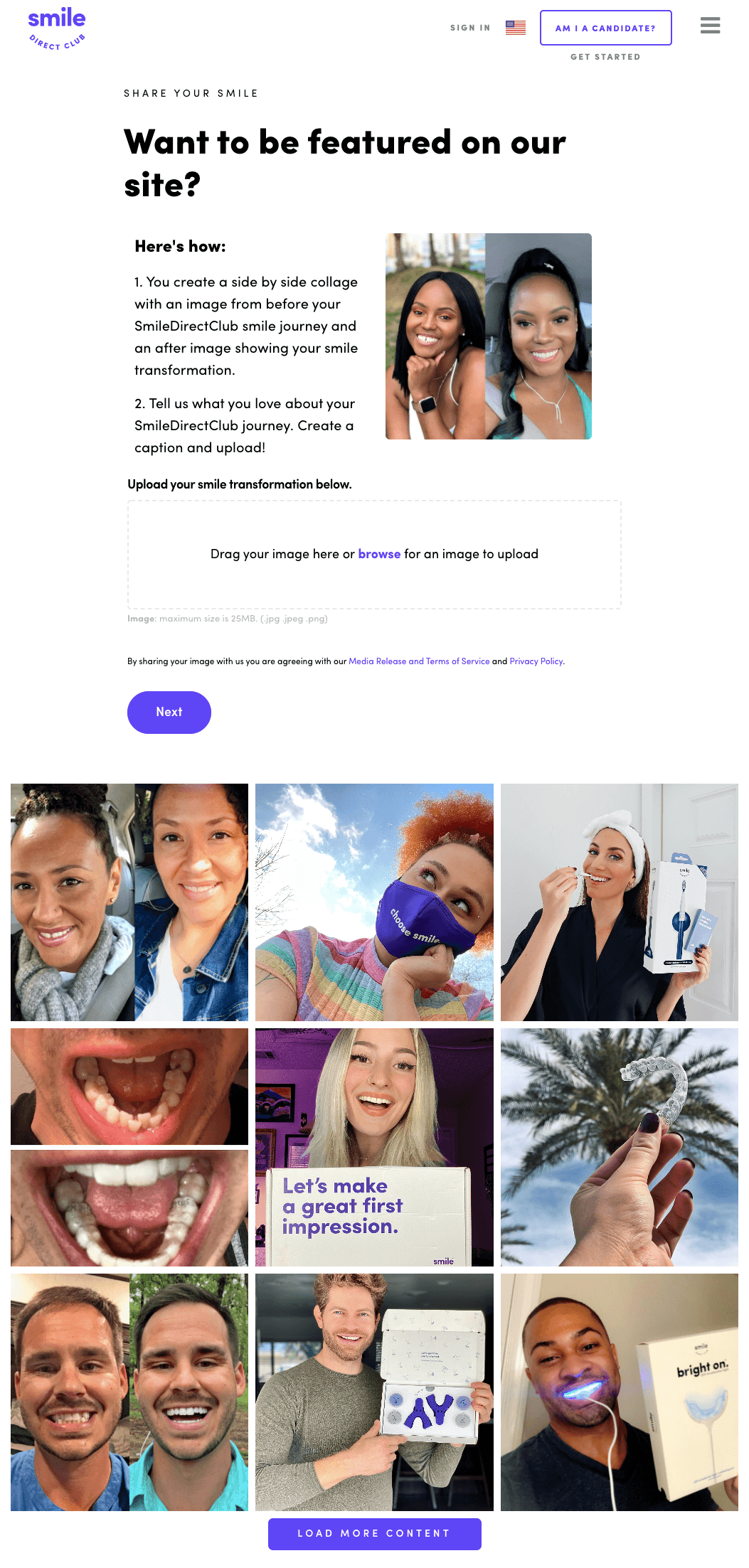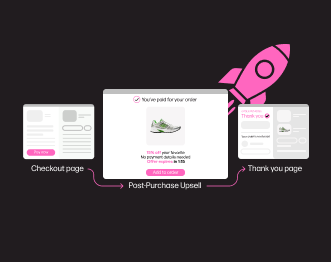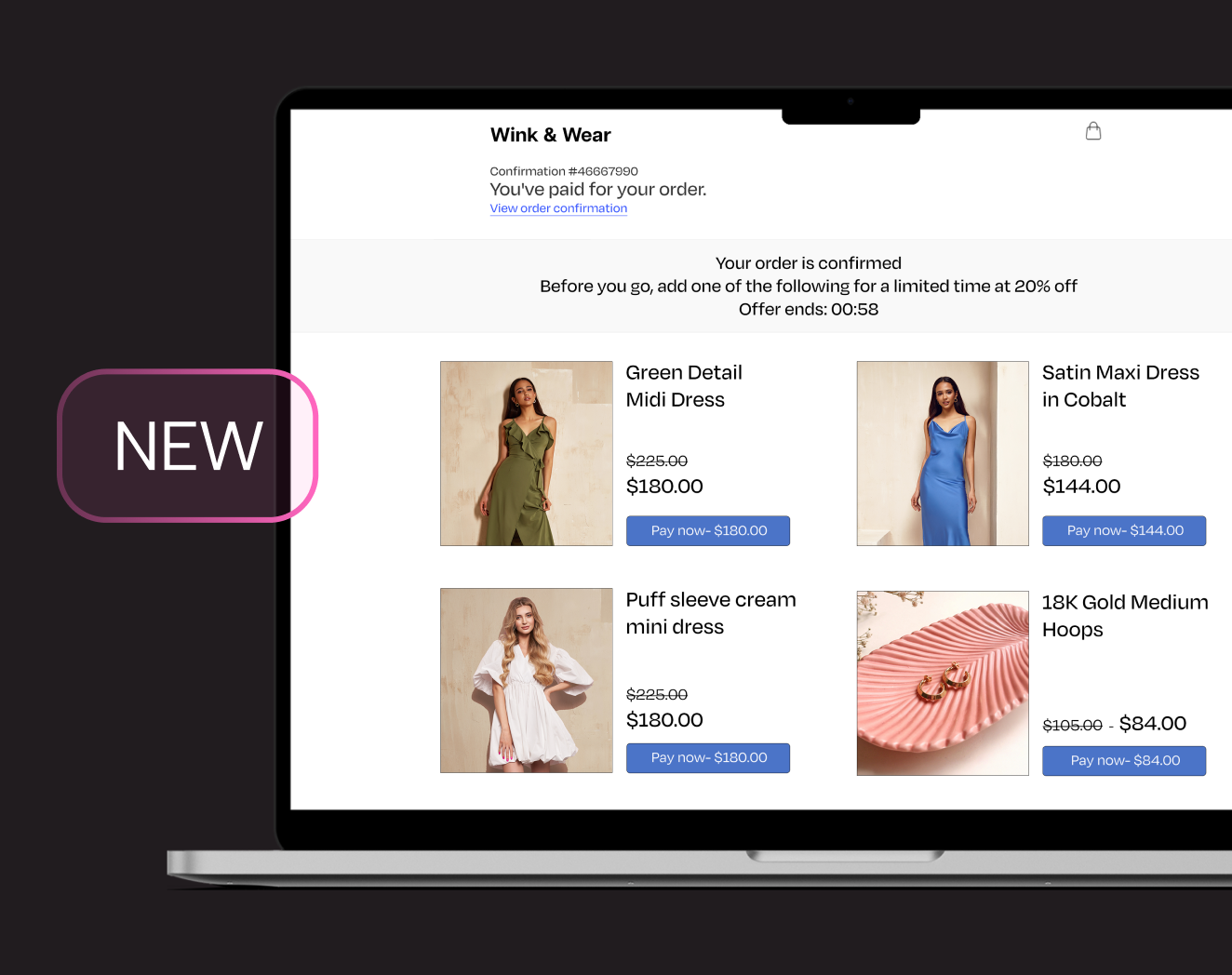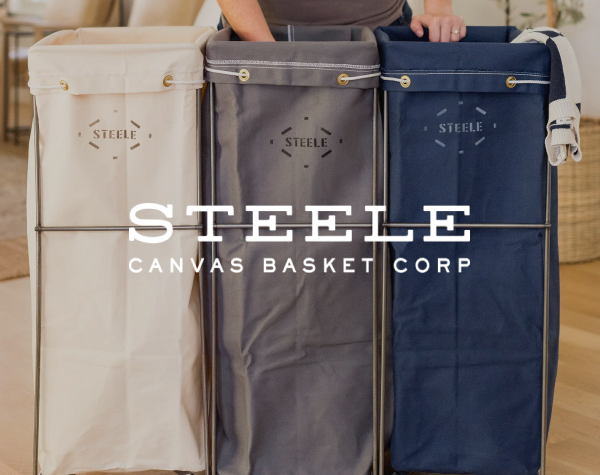Social Proof: What it is, Why it Works & How to Use it to Improve Your eCommerce Marketing Results
If you’ve ever bought a pair of jeans after seeing them on someone else or ordered a meal upon seeing it delivered to a person at the next table, then you’ve been influenced by social proof. But what exactly is social proof?
Social proof is a powerful phenomenon that has long impacted people’s buying decisions. As the way we shop has evolved, so have the types of social proof brands have at their disposal.
In this post, we’ll cover what social proof means, why it’s more important now than ever and the many ways brands can leverage it for marketing success.
What is social proof?
Social proof is the theory that people imitate the actions of others.
First coined by psychologist Robert Cialdini in his 1984 book, Influence: Science and Practice, social proof is based on the idea that when a person is unsure of how to behave, they look to what others are doing and mimic their behavior.
When in doubt, people follow the herd. They do as others do.
Why?
Because of the core principles of social proof: uncertainty, similarity, expertise and number.
-
Uncertainty
When people are in new or unfamiliar situations that cause uncertainty, they feel the need to look to others for guidance.
-
Similarity
When making novel or unfamiliar decisions in a group setting, people are more inclined to follow the actions of those they view as similar to themselves.
-
Expertise
People tend to look to people and organizations they view as experts for guidance when making unfamiliar decisions.
-
Number
As the saying goes, there is strength in numbers. The more people who find an idea to be correct, the more correct or valid the idea seems to others.
You want the nice jeans your friend is getting compliments on; you order the meal you see others ordering and enjoying.
Why social proof is important for eCommerce brands
Most brands can benefit from social proof, but eCommerce brands in particular stand a lot to gain.
Here’s why:
Social proof increases eCommerce conversions
There are many factors people take into consideration before making a purchase: is this something they need, have they purchased it before, how much does it cost, is it high quality, will it do what it’s designed to, will it fit…the list goes on.
When considering items in person, shoppers can see, feel, touch, hold and even smell the product. But this becomes much harder with online shopping, where you can’t physically experience an item before purchasing it.
If you’re deciding between two pairs of jeans in person, you can try them on, see how they fit and feel the difference in the material. If you’re comparing the same pairs of jeans online, you have to rely on the photos and information shared about each product on the eCommerce site(s).
Since people trust other people more than they trust brands, it’s only natural that the most influential information in making their eCommerce purchasing decisions is not the brand-generated photos and product descriptions, but rather, the ratings, reviews and user-generated images from real customers.
While both brands may say their jeans fit a range of body types and won’t fade over time, seeing and hearing that confirmed by actual people who tried the product can be the difference in turning a browser into a buyer.
Social proof inspires online shoppers
Not only can social proof help move people to purchase, but it’s also a great source of inspiration to online shoppers.
Think about it: when shopping in a brick-and-mortar store, you may initially enter with the intention of buying a pair of jeans. But once in the store, the display of new shoes at the front may grab your attention. Now, instead of just buying the jeans, you’re also trying on those shoes that caught your eye—and maybe even contemplating the wallets on sale at the checkout.
Strategically placing shoppable social proof throughout your eCommerce site can help replicate this experience for online shoppers. It also offers the benefit of providing trusted third-party validation. Try placing compelling visual social proof on your eCommerce homepage, category pages, sales pages or even inspiration pages. Then, link that content to your product feed so a site visitor is prompted to go to the product page for each featured item and voilà! You’ve just moved that person from inspiration to purchase in a single click.
Social proof reduces online return rates
Return rates are a persistent challenge for eCommerce brands—and a huge threat to retailers’ profits. Often, the inability to evaluate a product in person translates into higher return rates.
Social proof can provide online shoppers with additional information that brands might think to highlight, but that’s valuable to would-be buyers. Real customer photos, for example, allow shoppers to see your products in real-world environments or on real people rather than perfectly-proportioned models.
Product ratings and written reviews also offer unvarnished opinions from other customers. If reviews of the jeans you’re looking at say they run small, you might buy them a size up. If people are saying they look more gray than black in person, you might choose to buy a different pair.
Since returns are often caused by a discrepancy between what the customer expected versus what they received, social proof can help close that gap and lower returns.
Top types of social proof
There are many different types of social proof. Some, like celebrity endorsements, have been around for a long time. Others, like user-generated content and ratings and reviews, have become mainstream now that social media and eCommerce shopping are ubiquitous.
Here are the top types of social proof:
Celebrity endorsements
Dating back to the early 1900s, celebrity endorsements have long been a popular type of social proof that brands have used in print, TV and billboard ads to help convince people to purchase their products. With the rise of social media, today’s celebrity endorsements tend to take the form of paid social media sponsorships. In order for these types of endorsements to be effective with digital-savvy consumers, the celebrity needs to be relevant to your brand and credible with your audiences—otherwise, it could backfire.
Expert recommendations
We all make small purchases every day, some we don’t put much thought into. But for larger, less frequent purchases—technology, furniture, cars, homes, etc.—we tend to seek expert advice. When buying an electric toothbrush, for example, a dentist’s opinion is going to mean more than a peer’s opinion.
User-generated content (UGC)
User-generated content (UGC) is any form of content—posts, images, videos, etc.—created by consumers on an online or social network. That photo you posted of your Starbucks cup, the video you shared of your kid riding her new bike and the pictures you published from your last island getaway were all UGC. Billions of these authentic and engaging visuals are shared by people online every day—and have proven to be the most influential social proof consumers seek.
Reviews and ratings
Customer reviews and ratings are another highly influential form of social proof, widely popularized by top sites like Yelp and Tripadvisor. It’s now become a core element of global eCommerce sites looking to build trust with consumers. Today, it’s rare for people to make online purchases of almost any sort without referencing the ratings and reviews of other customers—whether it be where to dine, where to stay or what to buy.
Customer testimonials
Similar to UGC and customer reviews, testimonials tend to be either longer form written endorsements or video recommendations. Bigger ticket items like cars, furniture, sporting and equipment, as well as intangible products like software, usually implement this form of social proof throughout their marketing.
Influencer content
The rise of democratized fame through social media has enabled a new kind of celebrity: the ‘influencer.’ Using social networks to build their own online brand and audiences, influencers usually focus on a niche topic—beauty, cooking, fitness, travel, etc.—and promote various products and brands to their audiences in exchange for direct payment or being gifted the product. Like celebrity endorsements, it’s important for brands to choose the right influencers with the right target audiences to market their product.
Awards
Any kind of award or certification can serve as social proof for prospective customers. You’d feel better about buying a car that’s won a Kelly Blue Book Award than one that hasn’t, right? Prominently featuring these accolades throughout your customer touchpoints can go a long way towards building credibility and boosting sales.
Key social proof statistics
- 92% of consumers trust earned media (like UGC) more than any other form of content.
- 70% of people will trust a recommendation from someone they don’t know
- Millennials find UGC 35% more memorable than other media
- People are 6x more likely to purchase a product if the page includes pictures from social media
- 87% of people say social media posts help them decide what to buy
- 79% of consumers say their purchasing decisions are highly influenced by user-generated content.
- Online conversions increase 133% when mobile shoppers see positive reviews
- 56% of consumers say UGC photos and videos are the content they most want to see from brands
- 54% of people have purchased a consumer packaged good (CPG) after seeing user-generated visuals showing it
- 52% of people have made travel plans based on an image or video they saw on social media
- 57% of people have made plans to dine at a certain restaurant based on an image or video they saw on social media
eCommerce social proof examples
No matter where people are in the buyer’s journey, social proof can play an influential role. Here we’ll show examples of how social proof can have an impact across some of your top customer touchpoints—from discovery and inspiration to consideration and purchase.
- Organic social channels
- Facebook ads
- Billboards
- Website homepages
- eCommerce product detail pages (PDPs)
- Shopping cart abandonment emails
- Promotional emails
You can also find inspirational user-generated content examples used for marketing initiatives.
Social proof on organic social channels
As a leading provider of fitness, nutrition and weight loss solutions, Beachbody strives to show the results they help members achieve through their large variety of fitness programs and nutritional products. Naturally, the best way to do that is through their members.
To inspire and engage their over one million Instagram followers, Beachbody regularly shares posts from their coaches and members. Whether it’s before and after weight loss photos, new exercise tips or nutritional reminders, these real user-generated visuals help serve as effective social proof—building trust and community.
Social proof in Facebook ads
Looking to break through the social media noise and reach scroll-happy consumers with the trusted user images they seek, Little Bellies organic baby and kids food brand partners with parent micro-influencers on sponsored Facebook ads.
As Georgie Scott, marketing manager for Little Bellies, said, “[Micro-influencers and] UGC works well for us because parents are really discerning about food products for their children. The fact that we are able to access and publish content from real parents, mostly mothers, who are recommending our products to other mothers makes this strategy quite powerful.”
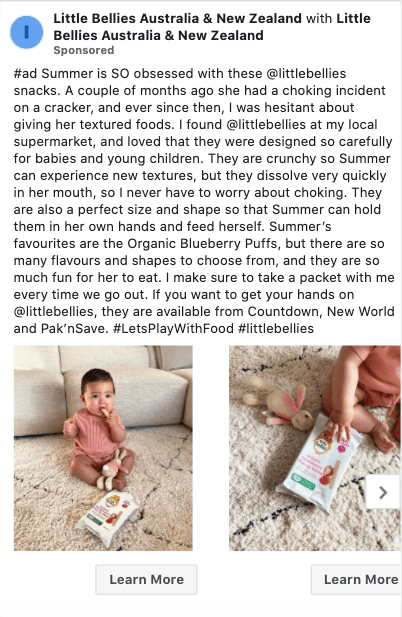
Social proof on billboards
To prove that every iPhone owner has a professional-grade camera in their pockets, Apple took the photos shot by real iPhone customers and put them on massive billboards. Displayed on tens of thousands of billboards across over 25 countries, Apple’s ‘Shot on iPhone’ campaign was game-changing when it first came out in 2015—and continues to excite and influence consumers around the world.
As BusinessInsider stated, “It worked so well because it coupled human emotion with actual product benefits, rather than product features.”
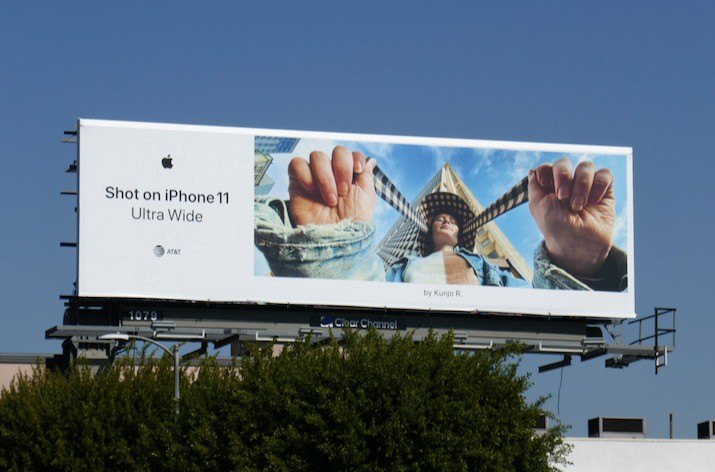
Social proof on website homepages
Since your brand’s homepage is usually the first place people enter your site, making a good first impression is important. Prominently featuring social proof is a great way to immediately build trust and inspire shoppers.
Milwaukee Tool does this well by showcasing real customer-generated photos of their products on their website’s homepage.

Scrolling down the page, you’ll see they have a call-to-action, clearly asking visitors to “Join the Conversation.”
Social proof on eCommerce product detail pages (PDPs)
Product detail pages (PDPs) are arguably the most important webpages on any eCommerce site. It’s on your product detail pages that you need to not only inspire, but also convince and convert shoppers. It’s here that social proof can be a powerful tool to build trust and boost eCommerce conversions.
Lush Cosmetics is a great example of a brand that uses a combination of social proof to effectively move people from the point of inspiration to the point of purchase across their eCommerce store.
They connect content to commerce, shortening the path to purchase for online shoppers by showcasing shoppable social proof throughout their site. Visitors who click on a piece of engaging user-generated content, are presented with a ‘Shop Now’ call-to-action that takes them directly to the product detail page for that particular product.
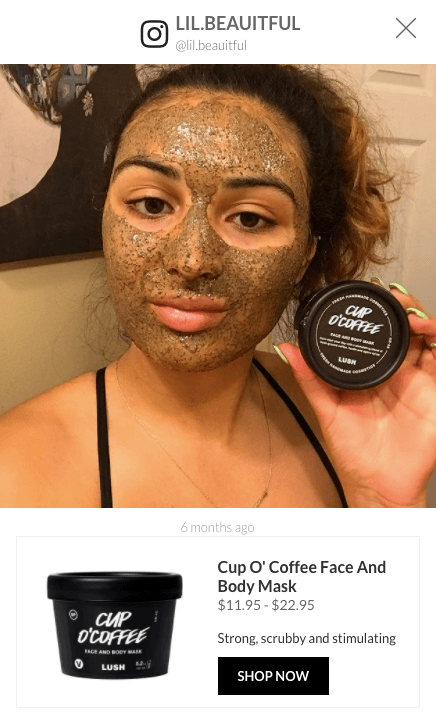
At the very top of that product page, shoppers are greeted with the 4.6-star rating the Cup O’ Coffee face mask has received from over 970 customer reviews—reinforcing its popularity with other online shoppers.
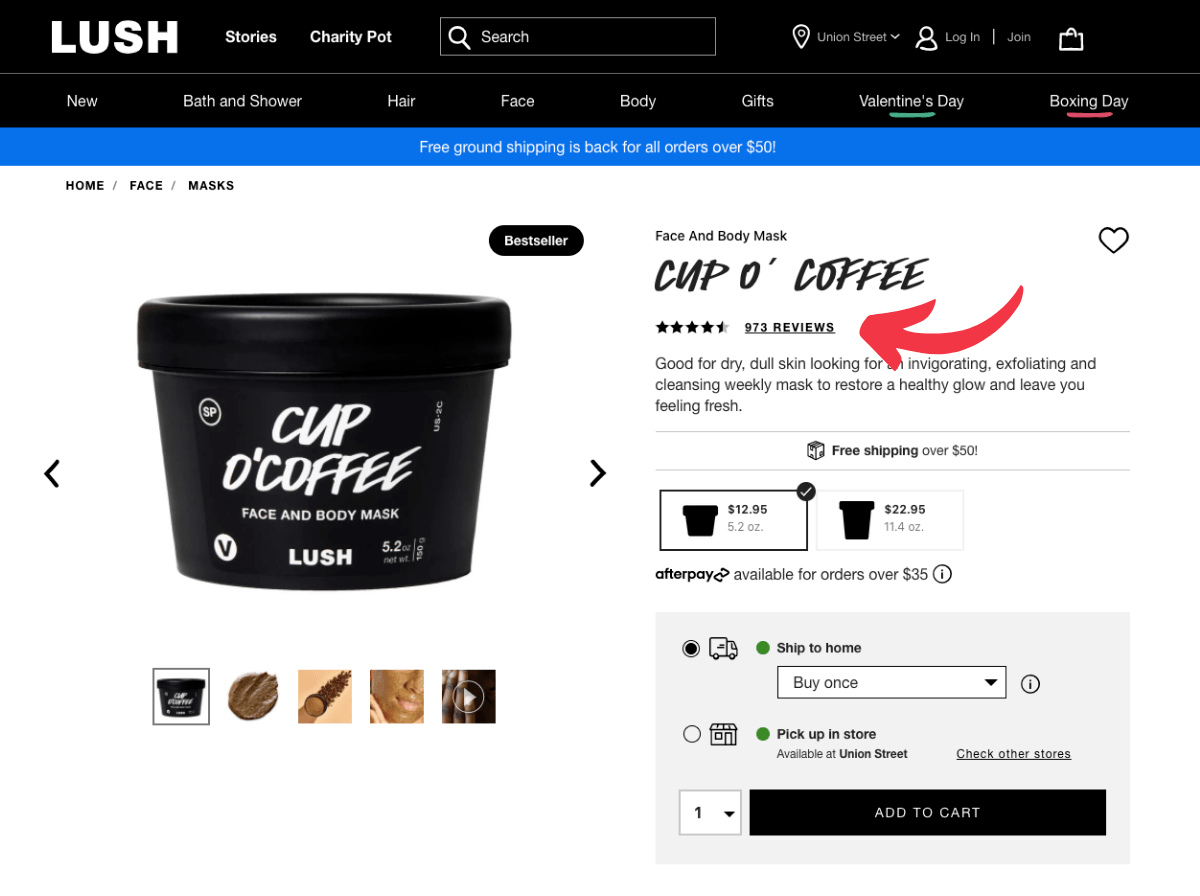
Also included on the product page for this face mask are quotes from customers who have given this product a five-star rating. It’s accompanied by a visual social proof gallery featuring the user-generated content of other happy customers using the product.
This ‘Spotted on social’ UGC gallery offers further visual proof of customers’ enthusiasm for this product while also inviting new customers to follow the brand online and share their product photos for a chance to be featured on Lush’s website—simultaneously displaying and generating social proof.

Social proof in shopping cart abandonment emails
Shopping cart abandonment is the bane of eCommerce marketers’ existence. To have consumers be so close to buying your products, then not follow through with their purchase is very frustrating. No one likes to leave money on the proverbial table.
To remind shoppers of their buying intentions and convince them to come back and complete their purchase, brands like Musely have started using social proof in their shopping cart abandonment emails.
Musely is an online medical skincare company that features real customer reviews and before and after photos on their site. This social proof is aimed at convincing people who have started the treatment questionnaire on their eCommerce site to come back and order their products.
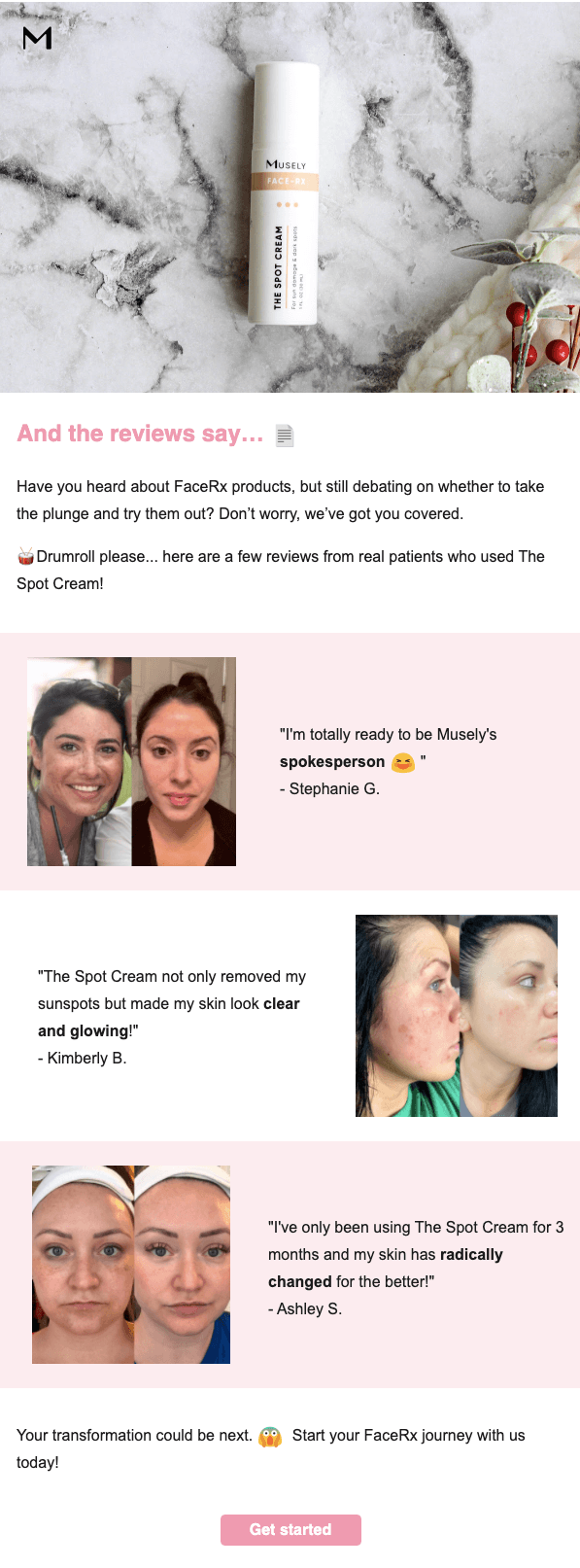
Social proof in promotional emails
Promotional email campaigns are a huge driver of website traffic and sales for eCommerce businesses. But we all know promotional emails can quickly become dull and repetitive. Visual social proof can serve as a fast and easy way to make them more interesting and engaging for users.
DSW (also known as Designer Shoe Warehouse) has started to use social proof in some of their promotional email campaigns. In addition to promoting their sales and special offers, they also showcase photos their customers share on social media with the hashtag #MYDSW.
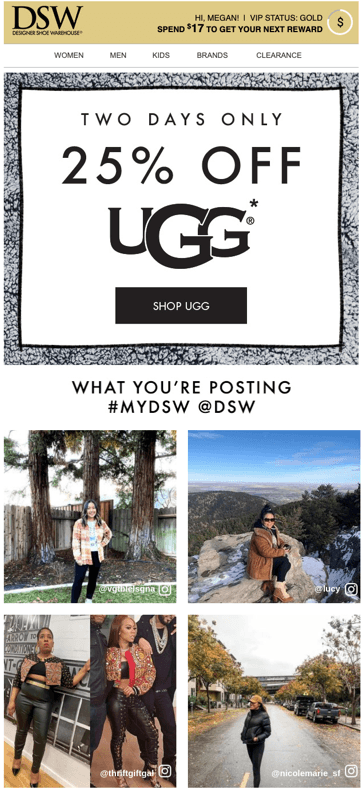
Social proof in community emails
People don’t want to just be customers, they want to feel like they’re part of a community. Brands that can not only connect with customers but also connect customers to each other have greater potential to strengthen brand loyalty and grow sales.
Peloton continually works to create a community for its members, and one way they do that is through email. Peloton sends out emails inviting members to “Find Your Crew.” It’s an email campaign that highlights stories and images from real members who have found their niche communities within Peloton—be it fellow veterans, teachers, former athletes and more. By doing this, the brand has cultivated deeper, more meaningful relationships with its customers.
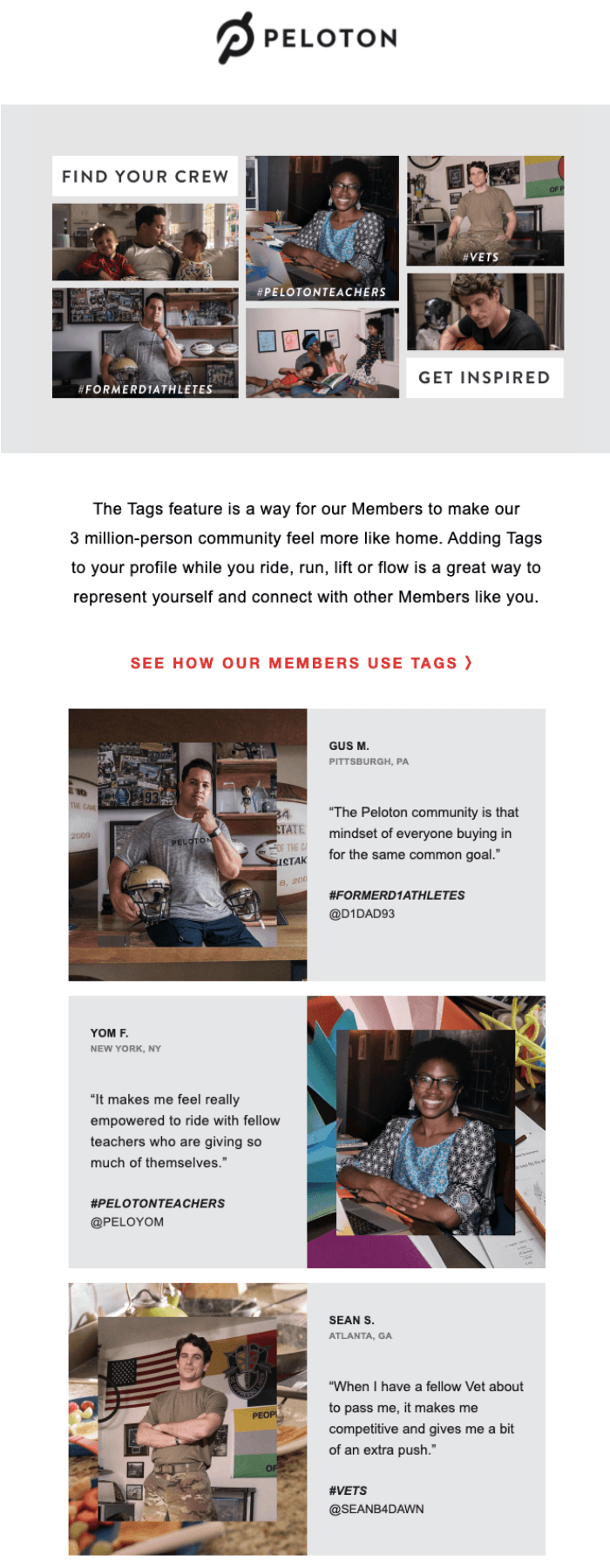
How to get social proof from online customers
Authentic social proof isn’t hard to come by these days—especially if your brand has broad awareness or an enthusiastic fanbase. However, even smaller and growing brands will find that with a little encouragement, it can be easy to get customers to generate the kind of content your brand wants.
1. Send requests for customer reviews after purchase
Take advantage of people’s new purchase high by sending customers requests for product ratings and reviews within a few days of delivery. Don’t be shy about asking for extra details that might benefit other shoppers. However, you also don’t want to mandate that all fields be filled out for people to submit their review. Make it as quick and easy as possible for people to contribute their feedback.
Worried your review response rate will be low? Try adding an incentive for people who submit a review, like a giveaway or discount. They might be more likely to share their thoughts in exchange for 15 percent off their next purchase.
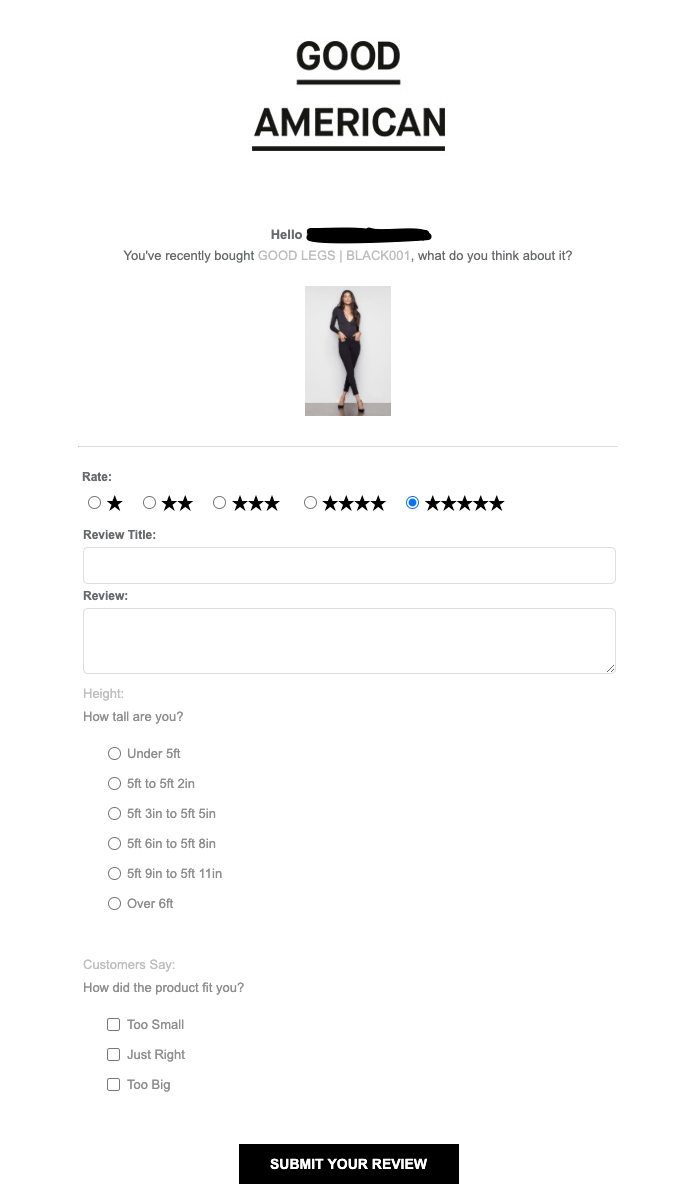
2. Simplify review and visual UGC submissions on your website
To maximize the volume and frequency of reviews and UGC submissions, you must optimize your website to remove barriers to entry.
The more simple and straightforward it is for customers to submit positive rates, reviews and UGC, the better. Provide clear calls-to-action, be specific about what you want and reduce the number of steps necessary for people to submit. It also doesn’t hurt to also show them the content others have submitted as inspiration.
3. Run a social media competition
Social media competitions are a fun and easy way to generate high-quality social proof while also engaging your audiences. Determine what kind of social proof you want your customers to create, then build your social contest around that—offering prizes or giveaways to encourage participation.
Need authentic social proof for a new product you just launched? Run a competition asking people to post photos of them using that new item. Want seasonal user-generated images to help fuel a particular campaign? Make the competition about sharing photos of people enjoying your brand as part of that season or theme.

4. Build a community of creators
Your customers are your brand’s greatest asset. The better you understand who they are, what they want and how to motivate them, the easier it will be to build a passionate customer community. Having a strong customer community drives sales and long-term loyalty, but it can also serve as a powerful source of social proof.
Innovative technology (like Stackla’s Organic Influencer tool) can help you discover, connect, engage and reward customers who already share authentic content about your brand on social media. Invite your most enthusiastic customers to join your community via a centralized and private community link.
Once they’ve signed up and agreed to your company’s terms and conditions, you can develop creative briefs that explicitly ask them for the exact types of content you’d like them to create. If you’re a fitness brand, maybe you could use more UGC of people doing outdoor yoga? Creative briefs are the perfect place to ask for that content.
To encourage a high volume of content submissions, you can choose to offer incentives, like discounts codes or product samples. Although, receiving recognition from their favorite brand as well as the chance for their content to be used in that brand’s marketing is typically all the reward customers seek. It’s a win-win scenario: the customers get direct acknowledgement, appreciation and maybe even some discounts from their favorite brands, and the brand gets more meaningful customer engagement as well as a fresh supply of high-quality social proof.
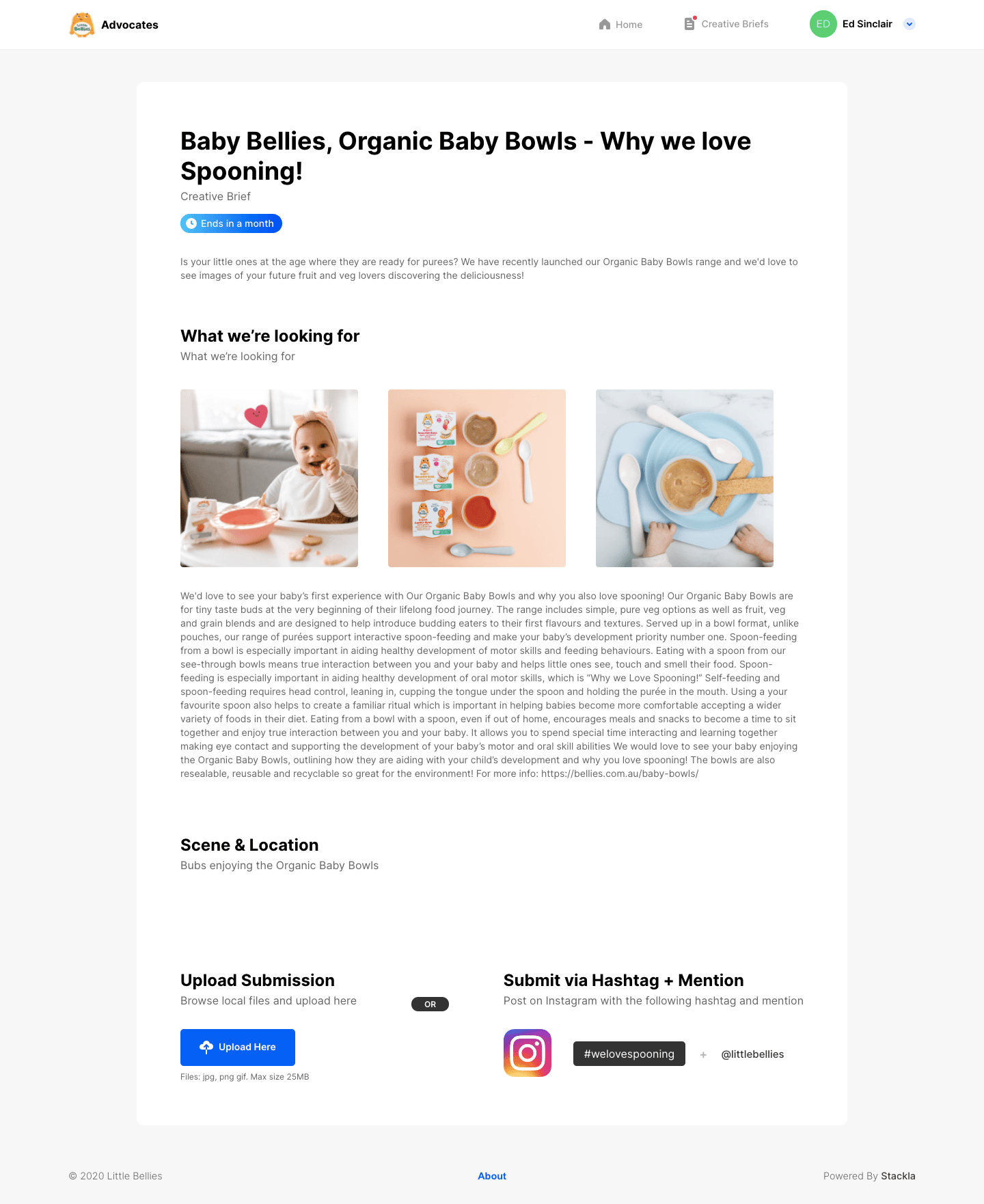
Conclusion
So much about how we shop has changed, but the power of social proof remains. In fact, the more shopping shifts from in-store to online, the more impactful social proof becomes.
No matter where buyers are in their customer journey, social proof can help guide them along, from inspiration and consideration to purchase and even advocacy. Finding the right balance of social proof to feature at the right times throughout your omnichannel marketing strategy can increase discoverability, build trust and boost eCommerce sales.

